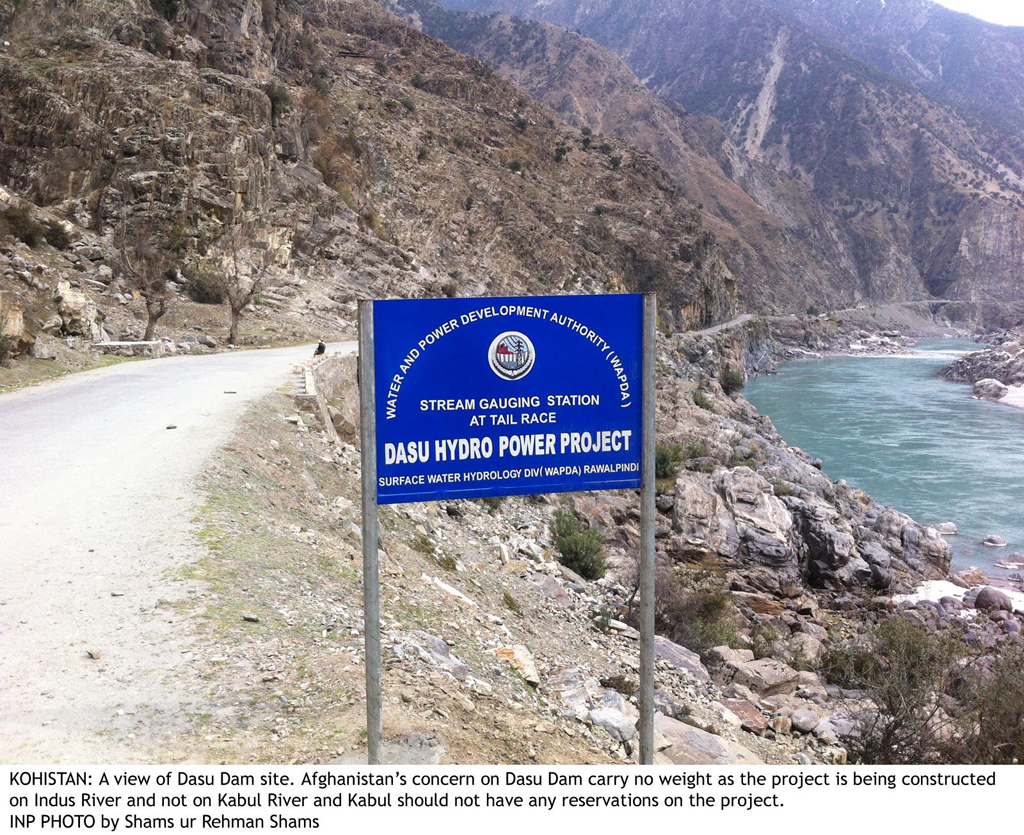

Dasu is meant to be one of the largest hydroelectric power projects in Pakistan, with an installed capacity of 4,320 megawatts, and an expected cost of just over $7 billion (a number that is likely to rise). It is also a project that appears most likely to proceed to actual construction, since the last political hurdle appears to have been overcome with Kabul’s acquiescence, and the World Bank is expected to approve $4.5 billion in financing for the project later next month. For a moment it looked as though the water and power ministry’s bungling of the proposal may have scuttled the project, but thankfully, cooler heads have prevailed. If, after going through all of these hurdles, the Dasu Dam still does not get built, heads must roll.
What is most encouraging, however, is the fact that the Dasu Dam appears to be part of the government’s larger strategy of building more hydroelectric power capacity, a process that has largely been stagnant since the completion of the Tarbela Dam in 1976. Private sector players are being encouraged to build and finance dams and other hydroelectricity projects throughout the country. And the government appears more serious than ever before in getting even the more politically contentious dams like Diamer-Bhasha through the bureaucratic morass that often ties down large infrastructure projects.
Hydroelectricity is the cheapest, cleanest, and most efficient source of power known to humans. It is the only long-term solution to Pakistanis’ insatiable and growing appetite for cheap electricity. The government is taking many of the right steps to develop this resource. We just hope these efforts do not go to waste.
Published in The Express Tribune, April 16th, 2014.
Like Opinion & Editorial on Facebook, follow @ETOpEd on Twitter to receive all updates on all our daily pieces.
COMMENTS (7)
Comments are moderated and generally will be posted if they are on-topic and not abusive.
For more information, please see our Comments FAQ


1719660634-1/BeFunky-collage-nicole-(1)1719660634-1-165x106.webp)

1732276540-0/kim-(10)1732276540-0-165x106.webp)







Dear G. Din, Based on my background of civil & hydraulic engineering, such an endeavor would increase the cost of the project many folds and we would not be able to enjoy all the said benefits of the Dam.
Perhaps some hydraulic engineer amongst your readers can enlighten us as to why an hydraulic project to produce electric power has to be built all at once? If you don't have the money required to build the whole project, why is it not possible to complete the project in several stages? Even the dam itself, without the power-producing equipment and structures, can be built in stages, if need be, can't it? Design the project completely on paper and then go about constructing it in convenient, affordable stages. This is not rocket science. Waiting for some illumination on the subject!
The only problem we are left with now is that Dasu dam is designed as a post-Diamer Basha Dam construction scenario. That means it can provide full 4300MW electricity only after Diamer Basha is completed first. Since that wil not be the case due to problems in financing, Dasu dam's electritiy generation will be reduced to about half.
Secondly, Dasu dam is run-of-river project, that is, it does not store any water of Indus and thus, this will not benefit irrigation sector of the country. For storage purposes, Diamer Basha dam had been planned, which will actually not only be producing more electricity and storing water, but also increaseing the life of Tarbela dam by approximately 20 years.
We certainly have to prioritize projects based on cost/benefit ratio !!
Dam, dams, and dams - that is what Pakistan needs. It is a shame how some political pundits, who are clueless what a dam can do for a country and its citizens, have stifled any discussions on dams. Sometime I really wonder if these pundits are agent of Pakistan's enemies as our children's children will die because of scarcity of water if we keep dumping fresh water in the sea.
You provide a link to substantiate your comment that World Bank is expected to approve a $4.5 bllion loan to Pakistan for Dasu. When you cick the link what does one read - that the Finance Minister of Pakistan has claimed just yesterday that World BAnk is expected to give a loa of 700 million to Pakistan for Dasu dam.
So how then did you come up with the 4.5 billion number? Poor editorial control.